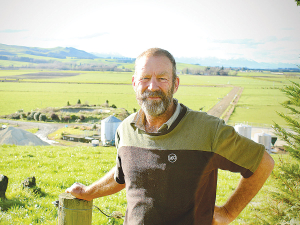Preparing for new freshwater plans
OPINION: With Freshwater Farm Plan (FWFP) regulations imminent, growers need practical, funded support now – not just more paperwork.
 Culverden farmer David Croft got his spreading equipment tested and calibrated by a Spreadmark accredited tester.
Culverden farmer David Croft got his spreading equipment tested and calibrated by a Spreadmark accredited tester.
With farmers now expected to produce Fresh Water Farm plans in addition to Farm Environment Plans, Culverden farmer David Croft decided to get his spreading equipment tested and calibrated by a Spreadmark accredited tester.
“We wanted to make sure we are spreading our nutrients correctly for our farm environment plan,” said Croft. “Also with the cost of fertiliser going up, it makes it quite a key area for us to save costs.”
Rather than a prohibitively complicated process, Croft said it was easy once he knew who to contact. Spread Test NZ’s Travis Churchill was the Canterbury contact, so organised the testing to be done on his farm. Other farmers also brought their machines to be tested at the same time. While they didn’t get Spreadmark certification they went through a similar process.
“We wanted to make sure we had our spreading width right,” said Croft. “Like any of these things there’s a costreward to it. We see it as an investment rather than an expense ($500 per spreader) because we get a payback on it. We also all learnt something from it.”
For Croft, the biggest lesson was that spinner speed is crucial.
“One of the farmers didn’t have a tachometer to check and it really upset his first pass with a horrible spread pattern. The spinners were too fast and were fracturing the urea.
“So it concentrated the product at the back of the spread and it didn’t fly as far.”
The calibration of the spreader between different product loads was also a key lesson, and because of different spreading patterns over the trays, Croft ended up altering his spreading width from 18 metres (urea) to 15 metres for NProtect.
Superphosphate was also an area of interest for Croft, who spreads his own.
“We do the one hectare soil samples and variable-rate phosphate applications, which is what got us interested in getting our spreader tested. Most people just do it for urea but we spread our own super too.”
Croft’s spreaders tested well but he queried the standard of the super, which showed to be too fine in the sieve box test. This required Croft to narrow up his spread pattern to 12 metres.
“I would highly recommend this to other farmers who are spreading their own product. As one of the biggest costs to farmers, we need to make sure we are getting bang for buck. We’d definitely do it again and currently plan to do it every two years.”
Legal controls on the movement of fruits and vegetables are now in place in Auckland’s Mt Roskill suburb, says Biosecurity New Zealand Commissioner North Mike Inglis.
Arable growers worried that some weeds in their crops may have developed herbicide resistance can now get the suspected plants tested for free.
Fruit growers and exporters are worried following the discovery of a male Queensland fruit fly in Auckland this week.
Dairy prices have jumped in the overnight Global Dairy Trade (GDT) auction, breaking a five-month negative streak.
Alliance Group chief executive Willie Wiese is leaving the company after three years in the role.
A booklet produced in 2025 by the Rotoiti 15 trust, Department of Conservation and Scion – now part of the Bioeconomy Science Institute – aims to help people identify insect pests and diseases.
President Donald Trump’s decision to impose tariffs on imports into the US is doing good things for global trade, according…
Seen a giant cheese roll rolling along Southland’s roads?